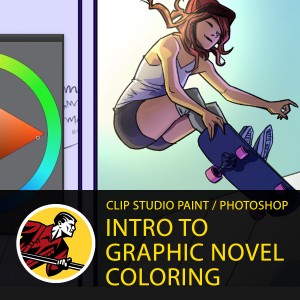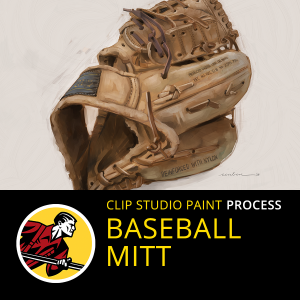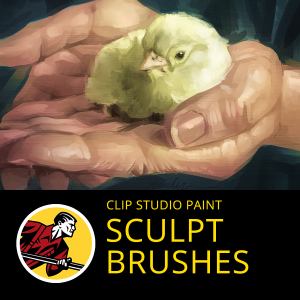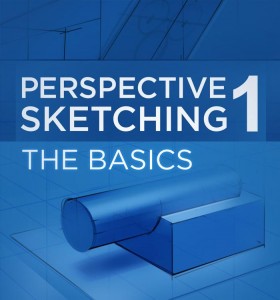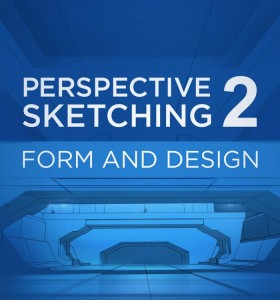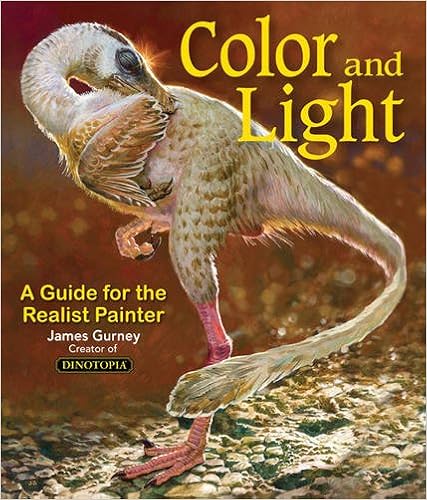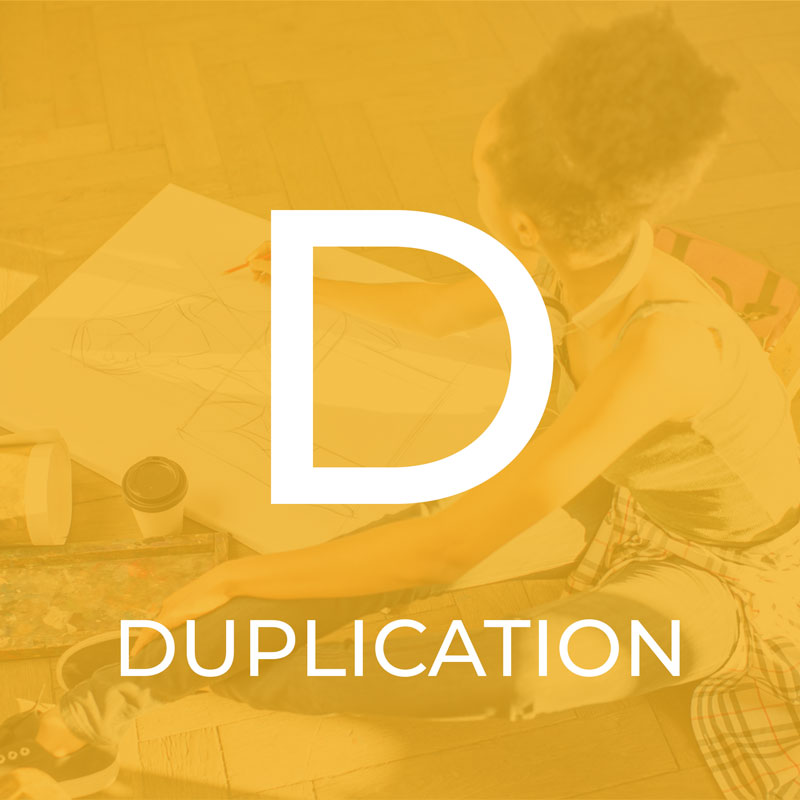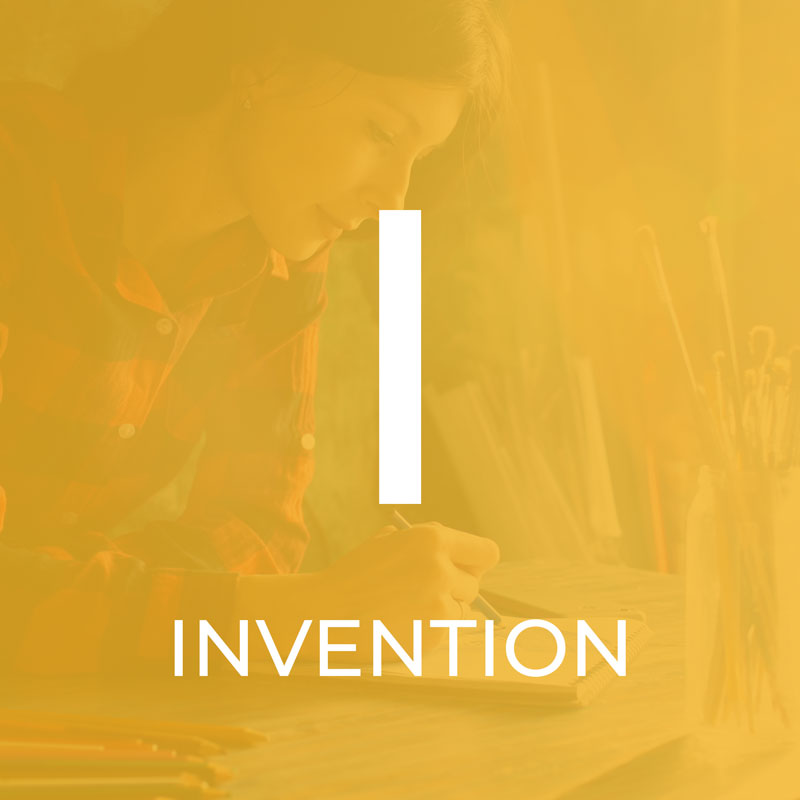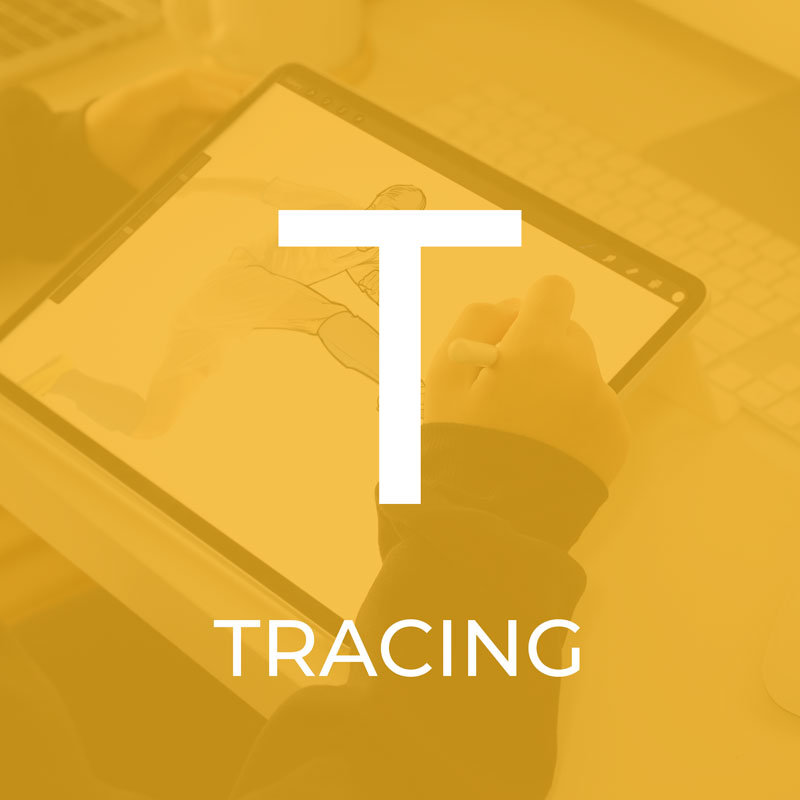< THE ART D.I.E.T.
EDUCATION
The good news is that you don’t need a college degree to make a living with art.
Learning theory and fundamentals from skilled professionals is crucial to growth. Unfortunately, an art school degree can be overwhelmingly expensive, impractical and even impossible for most people. Many college grads struggle with thousands of dollars of student debt, and often end up competing with artists in the workforce who don’t even have a degree. Fortunately, college isn’t the only place to learn from skilled professionals! The primary thing is to have a solid portfolio that shows you can do the work.
You have access to quality art education online.
There is lots of free content you should take advantage of, but setting aside some money to pay for professional educators will accelerate your growth. When you consider that a college degree in the arts can cost you anywhere between $100K and $300K, investing a few thousand dollars over the course of two or three years is a worthy investment into making a living as an artist.
Two important things that college does offer is structure and critique. So if you want to save lots of money but still get a good education, you’ll need to make sure to include those elements in your game plan. First, recognize that structure comes from discipline and commitment. Check out Matt Khor’s excellent discussions on attitude and focus. Second, be willing to pay a professional to critique your work. Good critiques accelerate growth because they break us out of the blindspot we all develop when we’re looking at our work for too long. I’m a working professional and I still request critiques from other artists I trust. Once you’re a pro and have established a circle of equally professional art peers, critiquing each other is likely something you’ll do for each other for free. But when you’re still learning fundamentals, most professionals can’t afford to be teaching you basics at no cost. So make it worth their while! If you’re a young person with no parental support, prepare six or seven drawings and offer them $5 or $10 for an hour of their time. If you’re a working adult or a parent of a child with real potential, be willing to compensate them at their hourly rate, which can be anywhere from $40 to $80. If you can afford it, take a summer course at a reputable community college to gain one-on-one access to qualified teachers. Remember that, if art is something you want to do for a living (or even if you are serious about your hobby), it’s not only necessary, but healthy, to make some financial investments in order to level up.
But here is what you can do on your own:
I’ve heard some artists say they hate reading and they hate sitting through tutorials. Well that’s OK, just don’t ever expect to fully explore your potential. When it comes to educating yourself, you have to put the time in or else you’ll hit a ceiling where you’re only implementing what you already know.
I recommend learning the same topic from at least three different teachers. No one teacher can show you everything you need to know about a certain topic. If a teacher repeats something you already know…great! Repetition will lock it in your brain. But each teacher’s experience will certainly add something new to your mind’s library of information, and this is where you will start to gain a bird’s eye view of foundation skills.

Make it a goal to watch at least one hour of training once a week. Here are some online resources to get you started:
One of my primary goals is to make sure parents have a guide to what they consider to be safe, online educational content. Every parent should decide when visuals like fantasy, dramatic themes or respectful nudity are appropriate for their children. I’ve indicated, to the best of my knowledge, when resources contain even one video which features one of these elements. Although I never recommend resources with suggestive nudity, violence, or occult themes, I do expect parents to review all content before sending children to any website. If you are looking for conservative content, don’t discount the entire site because something is flagged, just be aware that a few items may contain something more sensitive.
Fantasy
Dramatic Themes
Artistic Nudity
FREE
These creators have posted content as a labor of love. Remember, it takes a lot of time and effort to assemble quality training. If any of these creators provide places for you to make a donation and you’ve found any of their content helpful, you should show your support by skipping a burger every so often and throwing a few dollars their way!
YouTube / Reuben Lara
Clip Studio Paint training, Digital Painting, 2D Animation
I focus on both the technical and theoretical sides of digital painting. My software of choice is Clip Studio Paint, which I highly recommend learning. It’s becoming an industry standard tool and very much a companion software to Photoshop. If you are new to Clip Studio Paint, start with my popular Clip Studio Paint Basics tutorial.
ctrlpaint.com
Drawing Fundamentals, Digital Painting
Ctrl+Paint is a free learning resource dedicated to the basics of digital painting. Each bite-sized video covers a different concept, allowing you to learn complex subjects in manageable increments. Here are some of my favorites:
The Drawing Habit
Perspective Drawing Isn’t Scary
When in Doubt, Draw 100
YouTube / Alpay Efe
Oil Painting
Alpay is an incredible oil painter and mesmerizing to watch. So much of his technique can be applied to the digital painting process. Very inspiring!
YouTube / Proko
Anatomy
Stan Prokopenko uses humor and some really creative approaches to help break down complex anatomy.
YouTube / 1on1Animation
2D Animation, Drawing Fundamentals
Wayne Carlisi is a 2D animation veteran who is sharing decades of practical knowledge. It’s great to listen to him and even funner to watch him draw.
YouTube / The Art of Aaron Blaise
2D Animation, Digital Painting
Aaron Blaise is a 2D animation veteran who specializes in animal locomotion. If you want to learn how four-legged creatures move, this is the place to go.
Gurney Journey Blog
Art Inspiration, Traditional Painting Techniques
YouTube / James Gurney
Gouache Painting
James Gurney is the kind of artist I aspire to be. He is generous with his knowledge and celebrates all mediums. His blogs are informative and a great place to get a bit of weekly inspiration.
YouTube / FZD School
Concept Art, Drawing Fundamentals, Storyboarding, Character/Vehicle/Environment Design
FZD focuses on concept art, but even if that isn’t your focus, I guarantee you’ll learn a lot about composition, value, and storytelling during these informative 45 minute lessons. Just start at the beginning and work your way through. I’ve found that even when a title doesn’t pique my interest right away, there was much more under the hood that I was glad I didn’t miss out on. (Although If you’re grossed out by insect-inspired creatures you may have to skip one or two!)
YouTube / moderndayjames
Drawing Fundamentals, Anatomy, Drapery
James is a master of perspective and how it relates to drawing anything. Make sure you have a basic knowledge of perspective so that you can follow along productively.
Chris Oatley
Storytelling, Methodology, Portfolio Guidance
Chris Oatley is a character designer who has worked for companies such as Disney, Universal, Hasbro, Electronic Arts, and Activision. In 2012, Chris opened The Oatley Academy Of Visual Storytellingwhere he teaches courses in Composition, Color Theory, Visual Development, Character Design, Social Media + Self-Promotion, Digital Painting and Visual Storytelling. His free tutorials come from his valuable experience working in various high profile productions.
COURSERA
Drawing Fundamentals, Graphic Design
Coursera partners with top universities and organizations to offer select courses online. Once you sign up for free, you can choose to subscribe to take a course. Some courses have the option to audit, which means you can see the course for free but won’t have access to course materials (like file downloads). The course list can be impressive, like Fundamentals of Graphic Design, offered by CALARTS, which you can audit for free.
Adobe
Photoshop Tutorials
Sometimes the best place to learn is right from the source! Adobe has made some really good foundation tutorials for Photoshop. Even if your focus is illustration, you need to learn the basic technical skills first. Just grab some coffee, start at the beginning and work your way through.
COMPLETELY AFFORDABLE
These short courses should be part of a monthly budget you’ve set aside for art education. If you’re willing to spend $10 on a movie ticket or fast food value meal, you should be making similar investments in a craft that has much longer-lasting benefits. Even if you’ve learned perspective from one artist, spending $10 to learn from another is a guaranteed way to understand it to an even fuller extent. This is money well spent!
Gumroad.com / Reuben Lara
Clip Studio Paint training, Digital Painting, 2D Animation
These are more in-depth extensions to my free YouTube content. Here are some popular ones:
ctrlpaint.com
Drawing Fundamentals, Perspective, Digital Painting
In addition to tons of quality, free training, Matt Khor also has paid lessons that you have no excuse to not buy (…and I’m also talking to you, parents of talented artist kids!) At the very least, watch the two lessons on perspective found in the Foundation Skills pack. I pretty much trust anything Matt teaches!
Gumroad.com / James Gurney
Traditional Painting Techniques
James Gurney is so generous with his processes and techniques. He’s a traditional painter but I find that so many of his methods transfer over to digital. Portraits in the Wild is awesome and give you a good sense of his personality and totally relaxed approach.
Gumroad.com / moderndayjames
Drawing Fundamentals, Perspective, Anatomy, Drapery
James is a master of perspective and how it relates to drawing anything. These are more in-depth extensions to his free YouTube lessons. Make sure you have a basic knowledge of perspective so that you can follow along productively.
Proko
Anatomy, Figure Drawing, Caricature
These are in-depth extensions of Stan Prokopenko’s free YouTube content. Stan is an excellent teacher, and has invested in quality photographic reference to explain anatomy.
Gumroad.com / Foundation Patreon
Drawing Fundamentals, Concept Art, Character/Vehicle/Environment Design
John J. Park and Matthew Zikry are concept artists who teach art and design fundamentals. I’ve purchased a few of these and have never been disappointed. Since they work in the game and motion picture industry, they bringing real-world production experience to their lessons.
Gumroad.com / John J. Park
Digital Painting, Character Design, Environment Design
John J. Park, one of the founders of Foundation Patreon, is a master of composition and implied detail. You’ll learn something new and inspiring from watching any of these.
MONTHLY SUBSCRIPTIONS
The subscription model is a great way to learn from a variety of teachers. I recommend subscribing to one of these training programs one month at a time and benefitting from as much as you can handle. This model is where you can confidently explore disciplines you wouldn’t usually invest in since it’s one price for all courses during your subscribed month!
Schoolism
Digital Painting, Character Design, Concept Art
For $30 a month, you have access to pre-recorded lessons from an incredible roster of well-known artists. Bobby Chiu, Nathan Fowkes, Stephen Silver, Thomas Fluharty, Victoria Ying… wow. This is a great resource.
The Gnomon Workshop
Concept Art, Character/Vehicle/Environment Design, 3D Sculpting, 3D Animation, Software Specific Training
This has been a go-to resource for anyone in the concept, gaming, and entertainment fields. Industry veterans teach a wide variety of classes from character design to 3D sculpting. This isn’t necessarily a place to learn foundation concepts since it can be very software specific, but if you’ve already decided to dive into the visual effects rabbit hole, then this is an important resource.
Skillshare
Various disciplines
A huge library of content that extends far beyond art. But there are more than enough quality art lessons here to justify even a couple months of investment. If you’ve always focused just on painting, this is a great place to dip your toes into other fields: calligraphy, typography, or flat design to name a few. You’ll round out your training by flexing some muscles you wouldn’t otherwise have exercised. Skillshare encourages content creators to create project-based courseware, which means that if you follow along, you’ll have something to show for the time you’ve spent.
WORTHWHILE INVESTMENTS
Remember: a full college art degree can set you back up to several hundred thousand dollars. Once you’re sure you want to make a living as an artist, you should be ready to invest at least a couple thousand dollars in some in-depth, structured courses that will strengthen the knowledge you’ve accumulated piecemeal. Many of these courses offer one-on-one critiques of your work. Even though they are more expensive, this is where you’ll be replacing some of what attending college brings to the table. So don’t cut yourself short! You’ve come this far, so make sure you invest in at least one direct mentor/student course.
SMART School
Traditional and Digital Painting
This program really blew my mind when I found it. It is mentorship based, which means each class only enrolls a handfull of students. Sessions are online, about 3 hours, once a week, for about 14 weeks. If you can afford the mentorship level ($2500), you get live instruction and individual feedback on your work from your mentor. If you can’t afford that, then you can audit, or “survey only”, the class for a fraction of the price, which means you get to watch the instruction but not have interaction with the mentor. The kicker? Greg Manchess is one of the mentors! Over 40 hours of painting instruction from Greg Manchess for under $400?? Yes please.
Scott Eaton – Anatomy for Artists Online
Anatomy
This is the anatomy course I’ve most benefitted from. Scott combines methods and knowledge of the old masters with modern-day approaches that focus only on the most important things artists need to know. This course has been taught to artists from around the world, including artists from leading animation, game, and visual effects studios – Industrial Light & Magic, Blizzard, Pixar, Ubisoft, LucasArts, Disney, Warner Bros, Sony, Rhythm & Hues, Valve and many others. It comes in two flavors: Full enrollment (which includes critiques from Scott), or Standard enrollment (which is just access to the lectures). Like any in-depth anatomy course, make sure you dedicate the appropriate amount of time and focus in order to fully benefit from the assignments.
Vilppu Academy
Anatomy
Vilppu Academy is the online version of the internationally renowned drawing courses taught around the world by Glenn Vilppu at animation, game and film studios as well as universities, art schools and private art academies. The lessons consist of video lectures, demonstrations, examples and weekly critiques of each students’ work as well as group discussion and the opportunity to get answers directly from Glenn. Glenn is considered to be one of the world’s top masters of human anatomy. His lectures require a lot of focus, dedication and commitment, but for the serious student, learning from him is a real privilege.
LAAFA Extension Classes
Anatomy
Online extension classes for the Los Angeles Academy of Figurative Arts. Workshops are open to the public and there is no admission process or portfolio review requirement to participate. Classes run between $300 – $800 for anywhere between 4 and 8 weeks, one day a week.
Watts Atelier of the Arts – Online
Anatomy
The renowned Watts Atelier offers in-person, online, and hybrid programs at different price points. This school is definitely in the tradition of the old masters, providing strong foundational skills in the classic arts.
CG Master Academy
Drawing Fundamentals, Character Design, Production Design
Averaging $500 – $700 each, these classes are top-notch and will definitely accelerate your growth. If you are serious about a structured progam, these 8-week courses are well respected in the entertainment industry. You can dive right into a specific discipline, or start with one of the Foundation & Design classes.
The Oatley Academy
Storytelling, Character Design
Chris Oatley is a character designer who has worked for companies such as Disney, Universal, Hasbro, Electronic Arts, and Activision. In 2012, Chris opened The Oatley Academy Of Visual Storytelling where he teaches courses in Composition, Color Theory, Visual Development, Character Design, Social Media + Self-Promotion, Digital Painting and Visual Storytelling.
My art books are among my most treasured posessions. You should definitely invest in (and then read!) a few of the foundation books that have influenced many artists over the years. Here are some basics you really should have in your library:
Color and Light: A Guide for the Realist Painter (James Gurney Art)
James is the creator of the imaginitive Dinotopia books. Here he breaks down the color palette and the use of color in a way that changed everything for me.Highly recommended. Make sure to also check out his Gurney Journey blog posts on using gamut masks.
Andrew Loomis: Creative Illustration
Andrew Loomis (1889-1859) is still considered to be a gold standard for professional-level illustrators. You should own this book just for the incredible illustrations, but on top of that, his composition and story telling techniques are so-tried-and-true that if you only used his methods for the rest of your life you’d be set.
Drawing Lessons from the Famous Artists School
This is like the Cliff Notes of the famous Famous Artist School , started in 1948 (search “Famous Artists Course” on eBay and take a look at the original coursework, some fun stuff). It highlights the most important lessons in a more consise, modern style, and even updates some of the original exercises for the digital age. Super fun.
METHODS of the art D.I.E.T.
Once a week, focus your learning time on one of these four methods.

